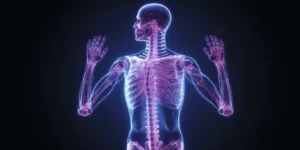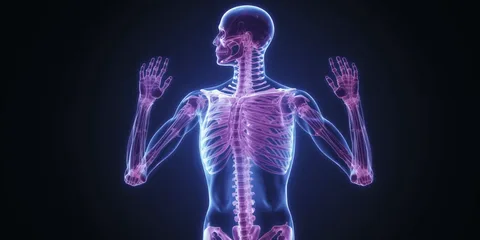Degenerative Joint Disease DJD ICD 10 commonly known as osteoarthritis, is one of the most prevalent chronic musculoskeletal disorders worldwide. It causes the gradual deterioration of joint cartilage and underlying bone, resulting in pain, stiffness, and reduced mobility. In the realm of medical coding and documentation, DJD is classified under the ICD-10 (International Classification of Diseases, 10th Revision) system, which is used globally for diagnostic purposes and insurance billing.
This blog explores what Degenerative Joint Disease is, how it is coded in ICD-10, and why accurate coding matters for diagnosis, treatment, and reimbursement.

What Is Degenerative Joint Disease (DJD)?
DJD ICD 10 is a chronic and progressive disorder affecting the joints, particularly the:
-
Knees
-
Hips
-
Spine
-
Hands
-
Shoulders
It is caused by the wear and tear of cartilage—the protective tissue that cushions the ends of bones. When this cartilage breaks down, bones may rub together, leading to pain, swelling, decreased motion, and, in advanced cases, joint deformity.
Common Symptoms of DJD:
-
Joint pain and tenderness
-
Stiffness after inactivity or in the morning
-
Swelling around the joint
-
Reduced range of motion
-
Bone spurs
Causes and Risk Factors
While DJD can affect anyone, certain factors increase the risk:
-
Aging: Most common in individuals over 50
-
Genetics: Family history can increase susceptibility
-
Obesity: Excess weight adds stress on joints, especially knees and hips
-
Joint injuries: Past trauma from sports, accidents, or work
-
Repetitive stress: Jobs or activities that require frequent joint movement
-
Gender: Women are more likely to develop DJD, especially after menopause
ICD-10 Overview
ICD-10, maintained by the World Health Organization (WHO), is a coding system used internationally to classify diseases, symptoms, and procedures. In the United States, it is used by:
-
Physicians
-
Hospitals
-
Insurance providers
-
Billing specialists
Each diagnosis is assigned a specific ICD-10 code, which provides precise information about the patient’s condition.
ICD-10 Codes for Degenerative Joint Disease
The most common ICD-10 code for DJD is:
M15–M19: Osteoarthritis (OA)
These codes fall under Chapter XIII: Diseases of the musculoskeletal system and connective tissue.
Here are some specific codes within this range:
General Osteoarthritis
-
M15.0 – Primary generalized osteoarthritis
-
M15.4 – Secondary multiple osteoarthritis
-
M15.9 – Polyosteoarthritis, unspecified
Osteoarthritis of the Knee
-
M17.0 – Bilateral primary osteoarthritis of knee
-
M17.1 – Unilateral primary osteoarthritis of knee
-
M17.5 – Other unilateral secondary osteoarthritis of knee
-
M17.9 – Osteoarthritis of knee, unspecified
Osteoarthritis of the Hip
-
M16.0 – Bilateral primary osteoarthritis of hip
-
M16.1 – Unilateral primary osteoarthritis of hip
-
M16.4 – Bilateral secondary osteoarthritis of hip
-
M16.9 – Osteoarthritis of hip, unspecified
of the Spine
-
M47.812 – Spondylosis without myelopathy or radiculopathy, cervical region
-
M47.816 – Spondylosis without myelopathy or radiculopathy, lumbar region
Other Locations
-
M19.011 – Primary osteoarthritis, right shoulder
-
M19.012 – Primary osteoarthritis, left shoulder
-
M19.90 – Osteoarthritis, unspecified site
These codes can be further refined based on laterality (right, left, bilateral) and whether the condition is primary or secondary.
Why ICD-10 Codes for DJD Matter
Accurate Diagnosis & Documentation
Precise coding ensures that healthcare providers understand the type, location, and severity of osteoarthritis. This leads to:
-
Better treatment planning
-
Consistent follow-ups
-
Targeted therapies
Insurance Billing & Reimbursement
An incorrect or unspecified code may result in:
-
Claim denial
-
Delayed payments
-
Insurance audits
Clinical Research & Public Health
-
Tracking disease trends
-
Conducting clinical trials
-
Creating public health initiatives
Diagnosis of DJD
Healthcare professionals use a combination of medical history, physical exams, and imaging tests to diagnose DJD:
-
X-rays to detect cartilage loss or bone spurs
-
MRI for detailed images of soft tissue
-
Blood tests to rule out inflammatory arthritis
-
Joint aspiration in cases of fluid accumulation
Once diagnosed, the correct ICD-10 code is assigned based on the affected joint and the type of osteoarthritis.
Treatment Options
While there’s no cure for DJD, various treatments help manage symptoms:
Non-Surgical Treatments:
-
NSAIDs (non-steroidal anti-inflammatory drugs)
-
Physical therapy
-
Corticosteroid injections
-
Lifestyle changes (weight loss, diet, exercise)
-
Joint supports or braces
Surgical Treatments:
-
Arthroscopy
-
Joint realignment
-
Partial or total joint replacement (hip/knee/shoulder)
Proper coding allows insurers to understand which treatments are medically necessary for reimbursement.
DJD by the Numbers
-
Over 32 million adults in the U.S. are affected by osteoarthritis.
-
DJD is the most common cause of disability in older adults.
Coding Tips for DJD (for Professionals)
-
Use primary or secondary OA based on medical records.
-
Ensure clinical documentation supports the diagnosis.
-
Pair diagnosis codes with procedure codes (CPT/HCPCS) for treatments.
Final Thoughts
DJD ICD 10 is a widespread and often debilitating condition that affects millions globally. The use of accurate ICD-10 codes, such as those in the M15–M19 range, plays a crucial role in proper diagnosis, documentation, and reimbursement. Whether you’re a patient seeking clarity or a healthcare professional managing records, understanding how DJD is classified in ICD-10 ensures better outcomes for all.
